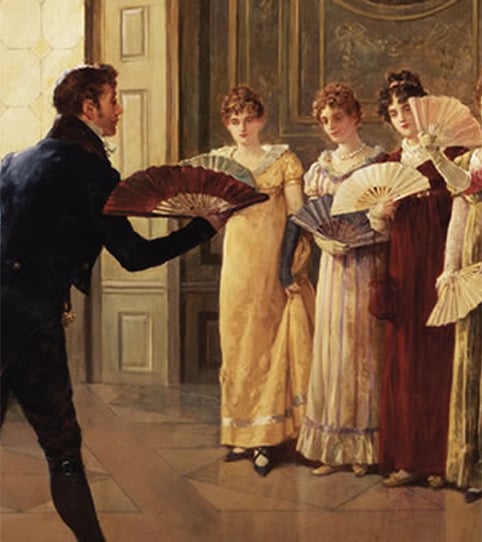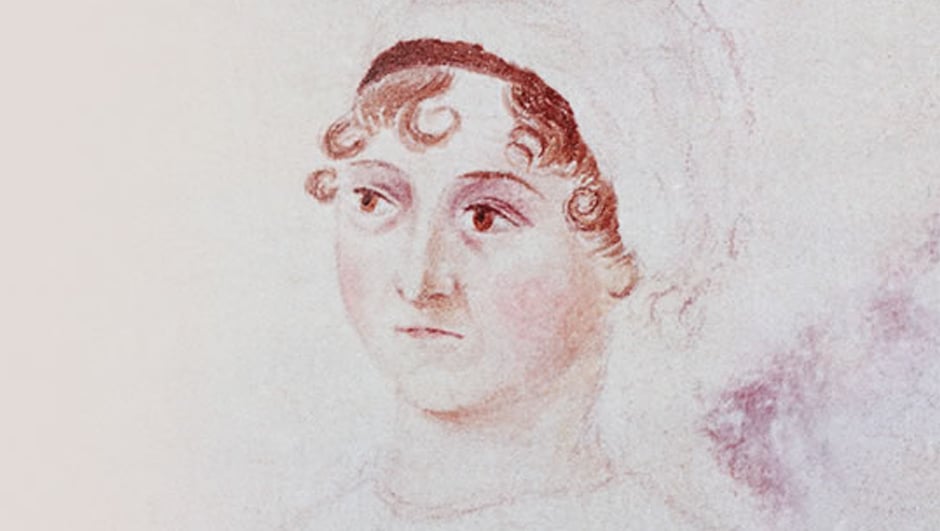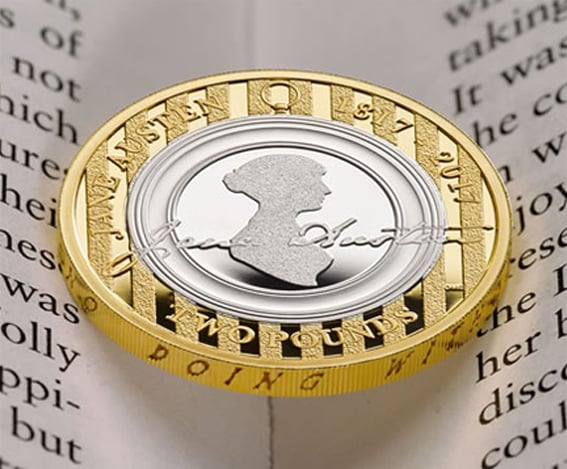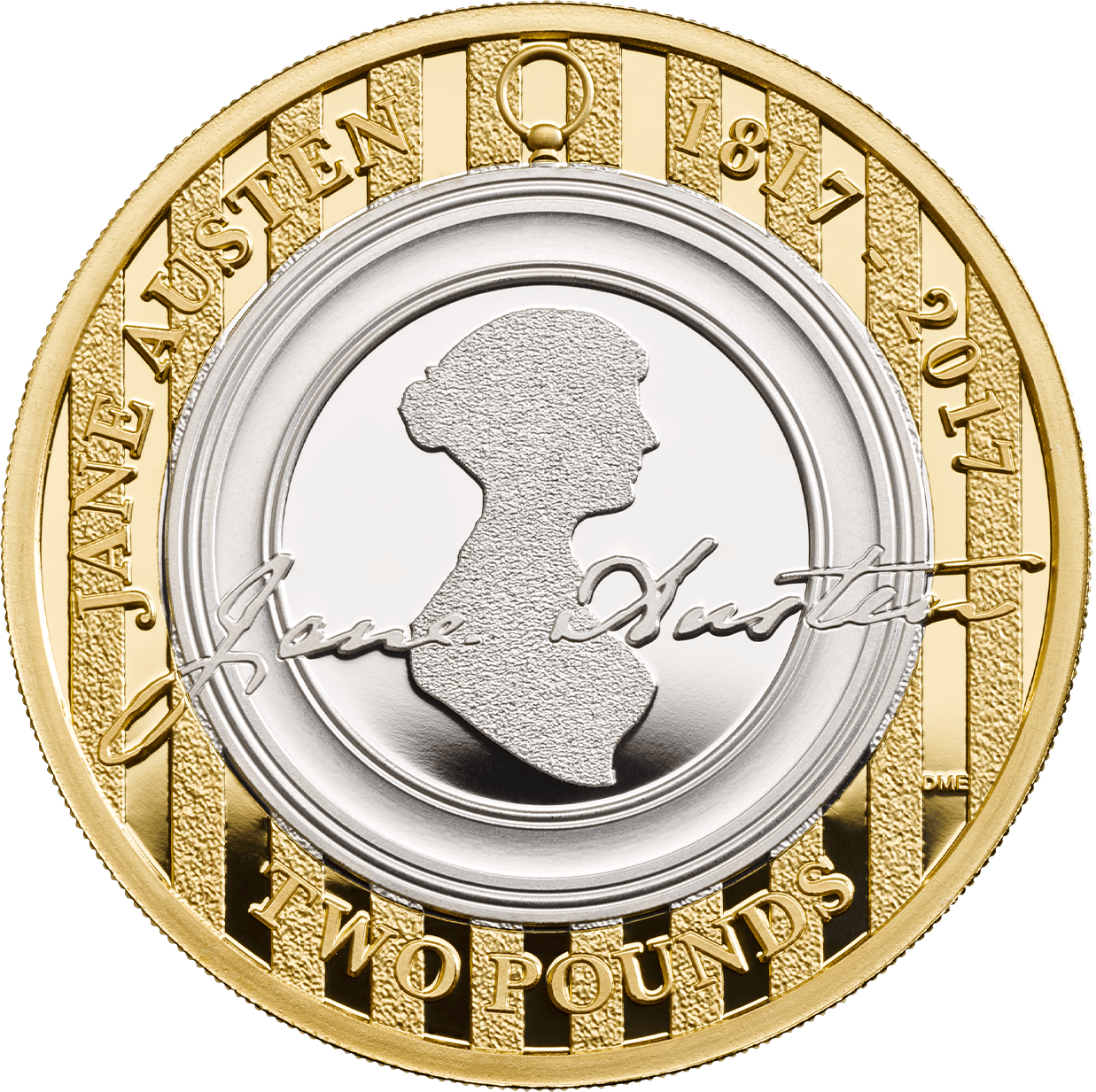A Lasting Love Affair
Since her first novel was published in 1811, Jane Austen has delighted readers with her beautifully crafted, satirical tales of Regency romance. Her elegant worlds of courtly balls, carriage rides and country houses offer an escape from modern worries, while her heroines’ quests for love and happiness continue to strike a chord with readers around the world.
Over the centuries, due to her books being translated into more than 40 different languages and dozens of popular film and TV adaptations, a lasting love affair has been created with Jane Austen and her works that we still celebrate today.
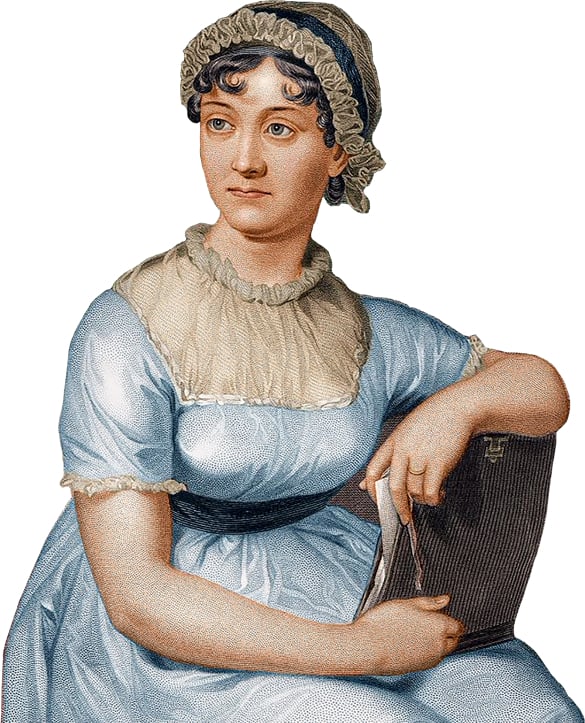
A Literary Life
Jane Austen was born on 16 December 1775 in the village of Steventon in Hampshire, one of eight children and the daughter of a clergyman. Fascinated by stories and the world of literature, she began to test out her own ideas in notebooks when she was still a teenager. These journals, which include many short stories and poems, are now referred to as her Juvenilia.
Initially, as a provincial outsider to the literary world, Austen had trouble finding a publisher willing to accept her work. After two failed attempts her first novel Sense and Sensibility was published in 1811, with her brother Henry acting as her literary agent. Austen was 35 years old and the book was issued anonymously, its title page bearing the credit ‘by a Lady’. Encouraged by its success, she published Pride and Prejudice, Mansfield Park and Emma over the next five years.
Unlucky in Love
Although her novels often focus on love and courtship, Austen never married, though she is believed to have had at least two opportunities. Aged 20, she met a charming young Irishman called Tom Lefroy but, apparently believing they were on the verge of an engagement, his family sent him home to prevent his attachment to a poor clergyman’s daughter. When she was 27 a wealthy family friend, Harris Bigg-Wither, also proposed. After first accepting him she changed her mind the next day, sacrificing affluence and security, probably because she did not love him.
In 1816, aged just 41, Austen became ill with what might have been Addison’s disease. She died on July 18, 1817, in Winchester, Hampshire. Before her death her career in print spanned only six years; Persuasion and Northanger Abbey were published posthumously. Much later, her Juvenilia and her unfinished novel ‘Sanditon’ also appeared in print.
A Revolutionary Romantic
Though often seen as simple romances, Austen’s novels are witty, narratively complex and full of humour and irony. In many ways she was a revolutionary in the way she treated subjects such as love and marriage and the position of women in Georgian society. Perhaps the best-loved of her books, Pride and Prejudice, set the standard for a new kind of modern romance. It shows the pairing of two equals who hide their initial attraction to each other but cannot stop their antagonism slowly developing into love.
Jane’s Fame
Though they initially sold quite well, it may surprise fans to learn that Austen’s novels were not widely appreciated or discussed during her lifetime. Her books were published anonymously and when she died her name was largely unknown. In the 1820s, her novels went out of print altogether. Through the nineteenth century a few admirers kept her reputation alive. Then, in 1870, her nephew James Edward Austen-Leigh published A Memoir of Jane Austen and the cult of Austen adoration was born. By the 1890s, the literary scholar George Saintsbury had coined the word ‘Janeites’ for her most devoted admirers. Over the years, appreciation of Jane Austen’s works has grown into a cultural phenomenon. There have been almost 100 film and television adaptions, in different languages, taking her works to new heights of fame across the globe.
"A silhouette of Jane is central to the design. She is such a fundamental part of literary history, even more so now that she will be in the hands and minds of the nation on a coin. I felt it appropriate to have the writer at the heart of the design, maintaining the air of simplicity and grace she deserves.
I thought it fitting to place a frame around her silhouette, and, as this coin is bicolour, it effortlessly lends itself to this feature. To complete the design, stripes have been placed underneath the text to set the frame, as though on a Regency-era wall."
-Dominique Evans
"How brilliant it is to have a heroine who is wrong most of the time, and to let her preconceptions warp almost everything we are told! Such is the delight of Emma, the most ingenious novel that I know. Emma Woodhouse’s main error is thinking that she knows what is going on in other people’s heads (though she is right about Mrs. Elton, the most gloriously funny monster in all fiction). She has plenty of detective work to do.
On the surface nothing much happens in the Surrey village where she lives but, in fact, the place is full of schemes, romances and duplicity and every kind of concealed passion. You have to work out Emma’s mistakes yourself, seeing the world mostly from her point of view and sharing in both her cleverness and her folly. When I was young I found her irritating; nowadays I think, ‘Emma Woodhouse, c’est moi’."
-Professor John Mullan


